- Strong performance
- Fun to drive with great handling
- Practical and spacious cabin
- Insane service pricing
- Where's the EU 180kW version?
- Nearly $60k drive away isn't cheap
Volkswagen Group Australia is almost finished launching its revised Tiguan mid-size SUV range. First was the entry-level 110TSI Life that we tested a few months ago and coming soon is the mid-spec 132TSI Life, but here we’re testing the top-spec R-Line with the 162kW 2.0-litre turbo petrol engine. While the Tiguan starts at under $44,000 drive away, the R-Line tested here is just shy of $60,000 drive away. Yet curiously, Volkswagen claims that this R-Line variant is going to be the top-selling Tiguan variant – and based on experience, we completely believe that as we see a lot more of this Tiguan variant than any other. With that in mind, what is the 2021 Volkswagen Tiguan 162TSI R-Line like? Let’s find out.
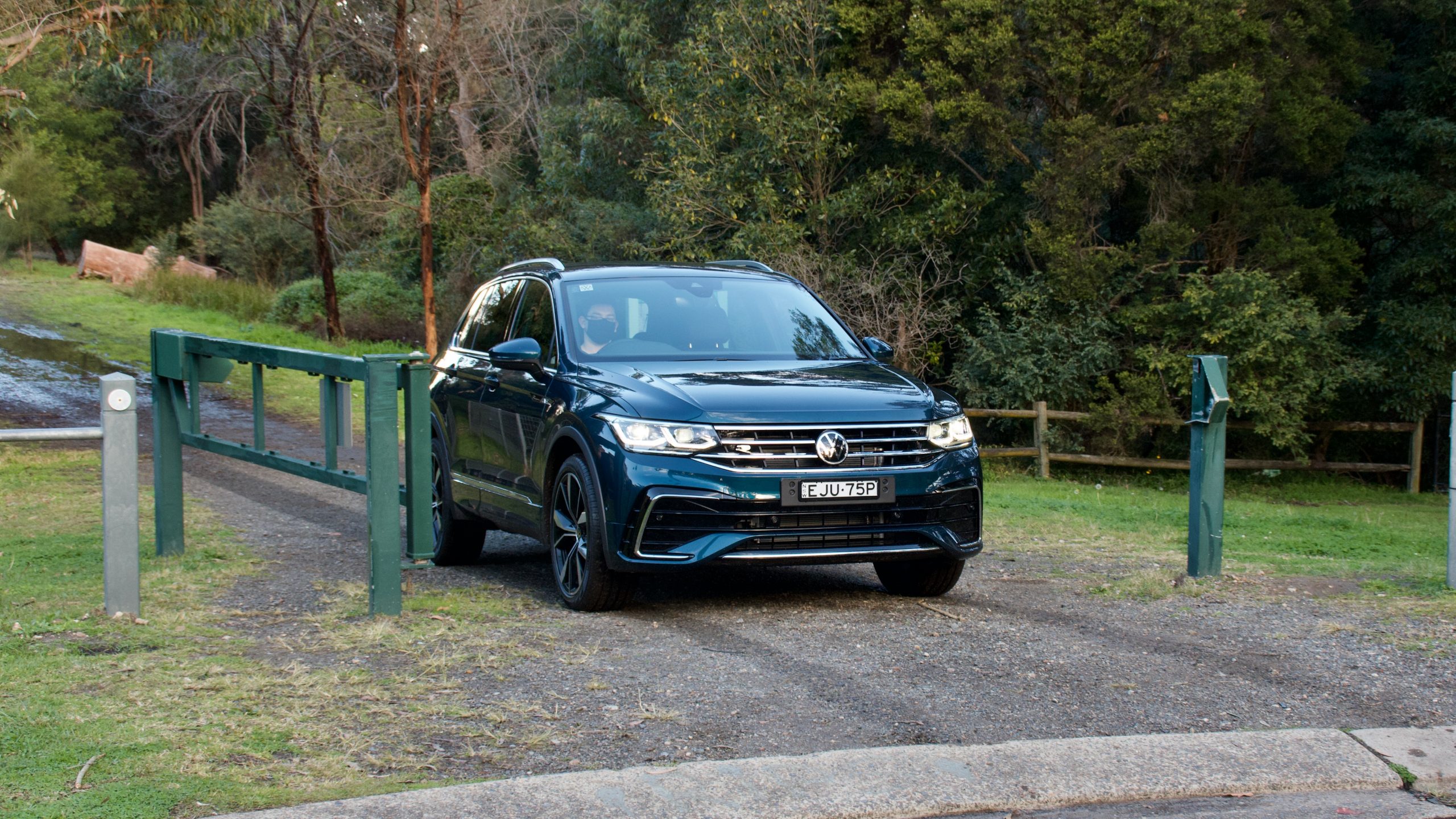
The Tiguan competes in the most populous segment in the Australian new car market – the mid-size SUV – and believe it or not, it’s actually Volkswagen’s best selling car. Competitors to the Tiguan include the Toyota RAV4, Mazda CX-5, Ford Escape, Peugeot 3008, Skoda Karoq and Hyundai Tucson. Yet thanks to the brand’s semi-premium positioning, count the Volvo XC40 and Audi Q3 as competitors as well.
Price & Equipment: 7/10
Pricing for the 2021 Volkswagen Tiguan range kicks off at $41,490 drive away – but we tested the opposite end of the Tiguan spectrum: the 162TSI R-Line, which is priced at around $59,230 drive away (a 147kW/400Nm 2.0-litre turbo-diesel 147TDI R-Line is also available for $1,500 more). That’s a serious amount of coin for what is essentially a Golf with an SUV body, so what do you get for your money?
A lot, to put it simply. Standard on the R-Line variant includes kit such as 20-inch alloy wheels with adaptive dampers, all-LED lighting, auto lights and wipers, tri-zone climate control, leather upholstery, 10-way electrically adjustable front seats with both heating and memory functionality, a heated steering wheel with paddle shifters, selectable driving modes, keyless entry and start, auto-folding and heated mirrors that dip automatically in reverse, a 9.2-inch touchscreen with wireless Apple CarPlay and Android Auto, satellite navigation and an electric tailgate.
Safety kit includes seven airbags, auto emergency braking (AEB) with pedestrian detection, lane assist with lane travel assist, Matrix adaptive high beam functionality, adaptive cruise control with stop and go functionality, driver fatigue monitoring, tyre pressure monitoring, blind-spot monitoring with rear cross-traffic alert, rear automatic braking, a reversing camera with front and rear parking sensors, auto parking and a system called emergency assist, which will gradually stop the car if the driver becomes unresponsive.
Optionally available equipment includes a $2,000 panoramic sunroof, as well as the $2,500 Sound and Vision Pack, which adds a 480W nine-speaker Harman Kardon sound system, a 360-degree parking camera and a heads-up display. Colour options include no-cost ‘Pure White’ as well as ‘Deep Black’, ‘Dolphin Grey’, ‘Reflex Silver’ and the particularly fetching ‘Night Shade Blue’ of our test car – the latter four options are $800 extra.
What’s it missing for the money? We’d like to see the rear side airbags from European Tiguans made available, as well as digital radio, remote start, live traffic reports, wireless phone charging and inbuilt apps such as Apple Music added as standard kit. The optional Sound and Vision Pack should be made standard as well.
Key competitors to the 2021 Volkswagen Tiguan 162TSI R-Line include the $52,990 drive away Mazda CX-5 GT SP, the $43,990 drive away Skoda Karoq Sportline and the $45,200 drive away Ford Escape ST-Line AWD. The CX-5 is undoubtedly less well equipped than the Tiguan, but there is a big price gap to swallow. Despite using the same platform and engine, the Karoq is slightly smaller than the Tiguan – but fully loaded, it doesn’t go past $56,000 drive away. Finally, we get to the value pick of the segment: the Escape ST-Line, which is comfortably the most powerful, well equipped and yet, even with the $2,000 ST-Line option pack to add kit like heated seats, significantly less to buy.
Another argument that motoring journalists love to make is the traditional wagon, which is more dynamic, more practical and often better value for money than SUVs. Even choosing from the Volkswagen stable – the $59,228 drive away Passat 162TSI, for example – proves that better value can be had, as while the Passat loses all-wheel drive versus the Tiguan, it’s got a 360-degree camera, rear side airbags, the Harman Kardon sound system and so on as standard kit.
Performance & Economy: 8/10
Under the bonnet of the 2021 Volkswagen Tiguan 162TSI R-Line is the ubiquitous ‘EA888’ 2.0-litre four-cylinder turbocharged petrol engine that does duty in a plethora of Volkswagen Group cars. In this tune, it produces 162kW of power and 350Nm of torque and it’s matched to a seven-speed dual-clutch automatic transmission. Like the lesser powered 132kW tune of this engine, the 162TSI is all-wheel drive.
As we’ve said before, the EA888 engine is excellent. It’s punchy at lower revs – peak torque is produced from just 1,500rpm, which means that you don’t need to rev it to get the most out of it in town. But revving it does make your drive more fun as it’s a great sounding and quick drivetrain. Peak power is produced at a high 6,200rpm, but unlike a lot of other turbo fours, there is reason to rev it that high as it’s properly fast that high. The benchmark 0-100km/h sprint is claimed at just 7.0-seconds, but in truth, it does feel faster than that thanks to the big slug of available torque.
Standard on all 2.0-litre Tiguan models is a seven-speed dual-clutch automatic transmission from the VW Group’s DSG family. Thanks to the traditional characteristics of dual-clutch autos – their low-speed hesitancy and lack of predictability though quick shift speeds once you’re up and running – the Tiguan could feel quicker from a standstill. It’s this unpredictability element to the DSG that makes it somewhat frustrating to drive at times.
Volkswagen claims that the Tiguan 162TSI will use 8.5L/100km of minimum 95RON fuel, and in mixed driving, we achieved 10.2L/100km. Not great, but not bad considering the performance on offer. We’d love to see the 180kW/370Nm tune of the Tiguan 2.0TSI offered in Australia though – its 7.3L/100km European test cycle claim is less than that of even our base model 110TSI.
The Tiguan 162TSI’s performance is clearly part of why it’s the best selling model in the Tiguan lineup. We just think that the Ford Escape ST-Line and its eight-speed torque converter auto and stronger 184kW of power feels even quicker – but the Tiguan’s engine is much preferable to the heavy and diesel-like 2.5L turbo petrol engine in the CX-5.
Ride & Handling: 9/10
While the Ford Escape ST-Line shades the 2021 Volkswagen Tiguan 162TSI R-Line for performance, the Tiguan definitely handles better and is more fun to drive than the Ford. In fact, we think that the Tiguan is – with its Karoq cousin – the best driving mid-size SUV that you can buy. Really, the only negatives to the Tiguan’s driving experience are the firm ride quality and somewhat high road noise levels and the reason for both is simple: the huge 20-inch alloy wheels, that are standard on the R-Line.
Standard on the Tiguan R-Line is the VW Group’s ‘progressive steering’ rack, which lessens the turns required for an easier and sportier-feeling steering system. Compared with the oddly-weighted steering in the Escape – itself is especially weird considering how well European Fords have driven for the past 20+ years – the Tiguan’s quick rack is a delight. It’s quick, meaty and reasonably feelsome no matter what the driving is – dropping the kids to school, or a back road blast once you’ve done so.
Also standard on the Tiguan R-Line are adaptive dampers, which do take the edge off the huge wheels in comfort mode, though remain too floaty. Our favourite mode is normal, which is firmer though bumps affect the car a lot less than in comfort mode though in individual mode, you can tailor the car to your tastes. The Tiguan 162TSI R-Line’s handling is excellent. Turn in is crisp, there’s more than ample grip and you can really feel the all-wheel drive system working to keep you moving.
Of course, the Tiguan does feel its 1,697kg tare weight sometimes – the lighter and smaller Karoq Sportline does feel nimbler – but the way it moves and shakes is almost hot hatch-like. Those wanting even more sportiness will be happy to learn that a full-fat Tiguan R is due here in early 2022 – though don’t expect much change from $75,000.
Interior & Practicality: 8/10
Like the entry-level 110TSI Life, the Tiguan R-Line’s cabin is good quality, very practical and stuffed full of tech to keep parents and their kids amused. Part of the R-Line transformation includes ‘Vienna’ leather upholstery with R-Line logos – the front seats are the ‘comfort sport’ units that feature in the lesser Elegance – and a flat-bottomed steering wheel with paddle shifters. The seats themselves are somewhat flat – especially in the rear – and the leather quality isn’t great either. But aside from that and the odd driving position, the Tiguan’s cabin is a conservative but classy affair.
Centre of the cabin is a 9.2-inch touchscreen that features wireless Apple CarPlay and Android Auto, as well as inbuilt satellite navigation – though not digital radio or live traffic updates for the navigation system. The whole Tiguan range also doesn’t feature wireless phone charging, which is odd given that it features wireless smartphone mirroring – passengers must use USB C ports to keep devices charged. The standard sound system is a reasonable unbranded eight-speaker unit – though sound lovers should option the $2,500 Sound and Vision Pack for the nine-speaker 480W Harman Kardon unit, which is excellent. It also adds a heads-up display and a 360-degree camera should be standard at this price point.
Material quality is not amazing inside the Tiguan – like the Golf Mk8, it’s a definite downgrade on Volkswagen’s past. The dashboard and front door top plastics are nice and soft, but everywhere else is hard and scratchy, which is acceptable on the $40k base model but not for the $60k range topper. The switchgear such as buttons and controls do feel great though, and the new dashboard and door trims with LED ambient lighting do make a difference. Like other VW Group cars, a shut of the door reminds you of just how solid these cars are.
But the most impressive thing about the Tiguan’s cabin is the available storage. There are huge cupholders, massive door bins with flock lining so that your keys don’t rattle, a big glovebox, a storage tray ahead of the gearbox and a big centre bin under the adjustable armrest. The rear seat features the same big door pockets, plus three pockets at the back of each front seat. There are also adjustable vents, a separate climate zone, an arm rest with cupholders and a third USB-C port next to a 12V socket – though no blinds for the rear windows.
Available space for occupants is huge as well, especially in the rear seat. Even six-footers will have no trouble fitting in the rear of the Tiguan with ample leg- and headroom that makes the rear seat of the Mazda CX-5 feel cramped in comparison. Helping this are large windows that make the cabin feel light and airy despite everything inside feeling dark and sombre.
The boot in the Tiguan – regardless of variant – is a healthy 615-litres (though that’s with the rear seats slid forward – which is a fairly unique feature in the class) that shades the 432L boot in the CX-5. It’s a practical space with a dual-level floor, prongs to release the rear seats and various hooks to tie your shopping bags on to. The 40:20:40-spilt rear seats fold almost flat and open up a huge 1,655L of space. Under the floor is a space saver spare wheel and the electric tailgate is quick to open – though unlike lower-spec Tiguans, you cannot wave your foot underneath the bumper to activate it.
Service & Warranty: 6/10
Like other Volkswagen products in Australia, the Tiguan R-Line comes with a five-year/unlimited km warranty with 12 months of roadside assistance – this matches Skoda and Ford, though the Mazda’s same duration warranty includes roadside assist for the whole warranty term.
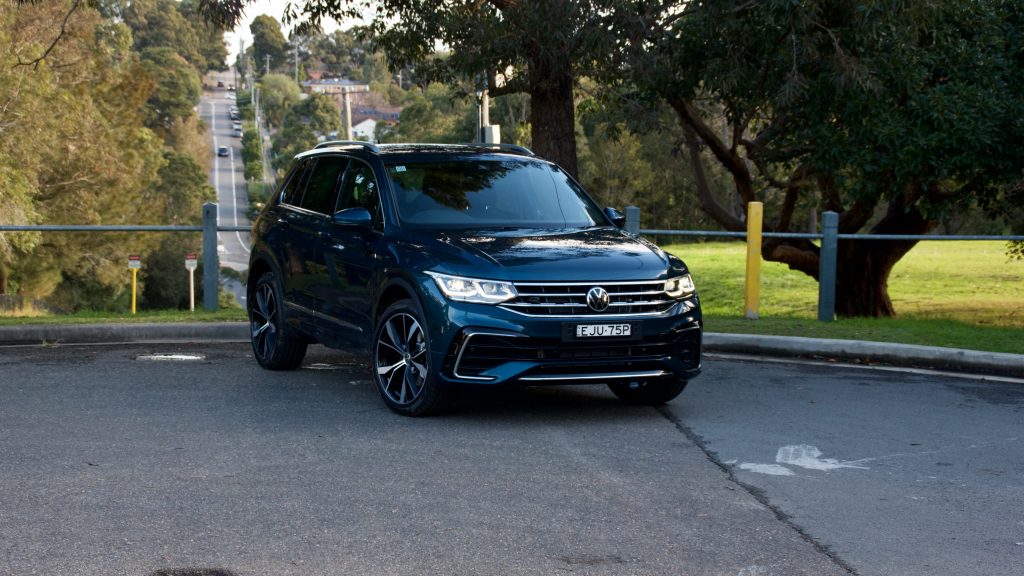
Unlike the Mazda’s short 10,000km service intervals, the Tiguan (and Karoq and Escape) features longer 15,000km trips between services. The cost of servicing the Tiguan 162TSI R-Line for five years/75,000km is a borderline offensive $3,708 ($741 per service), including a $1,536 60,000km major service that costs more than a Ford Escape’s entire five-year servicing cost in just one visit to the dealership. You can pre-pay for servicing when buying the vehicle and a five-year/75,000km plan (which includes five years of roadside assistance) is still an expensive $2,700 ($540 per service).
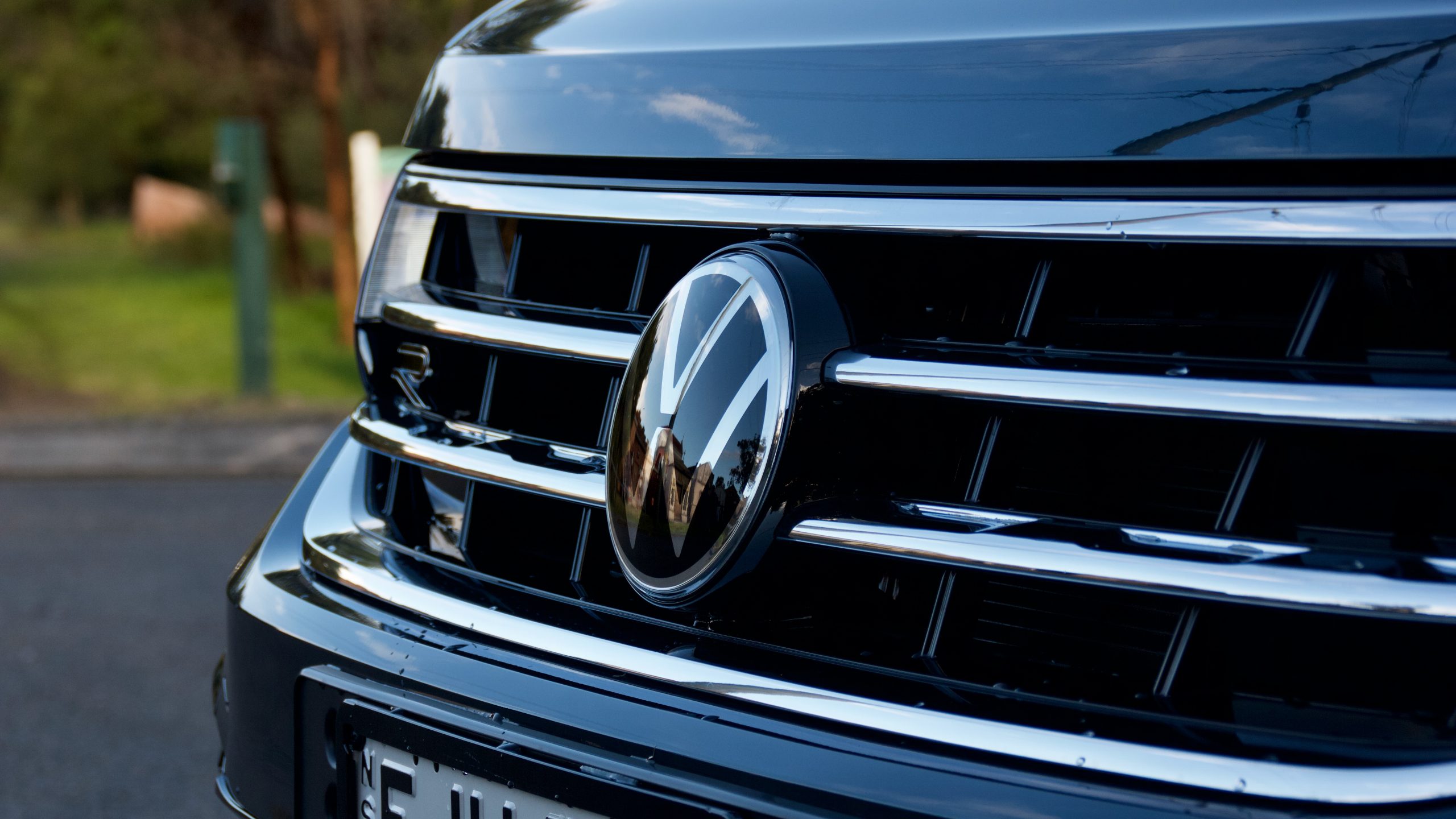
For reference, the Skoda Karoq – with the same mechanicals – costs $2,581 over the same period (though a service plan can reduce this to just $1,400). A Mazda CX-5 GT SP 2.5L turbo costs $2,040 to service over the same time period though that’s only to 50,000km – if travelling a full 15,000km per year, expect another two services and around $800 in addition to that. The Ford Escape costs a reasonable $1,501 over the first five years/75,000km to service and unlike every other brand here, there’s no caveat – that’s just what it costs to service.
The 2021 Volkswagen Tiguan 162TSI R-Line DiscoverAuto Rating: 7.8/10
We’re big fans of the 2021 Volkswagen Tiguan range. It’s a mid-size SUV that can seemingly do no wrong with buyers as even this $60,000 drive away 162TSI R-Line variant is expected to be the best-selling model in the lineup. There’s a lot that the Tiguan does right – it’s very practical, well made, drives very well, has a lusty engine, a long list of standard features and crucially for those wanting a sporty-looking car, it looks tough on its huge 20-inch wheels.
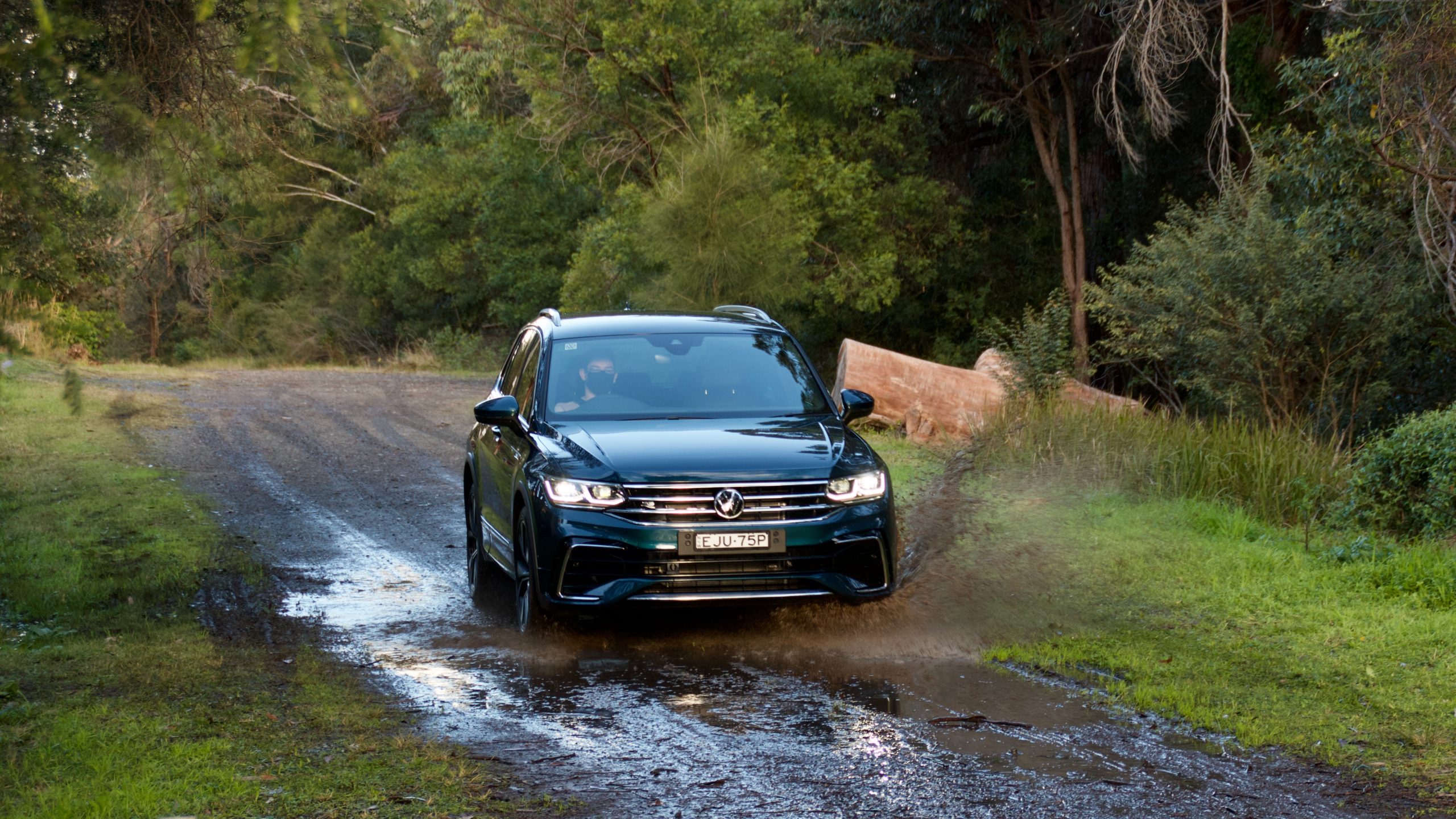
It’s not perfect though. It’s not cheap to buy, its service pricing is massive, we miss out on some equipment offered overseas and the interior quality just isn’t as special as you’d expect a $60,000 car to be. We don’t think the extra spend over the entry-level 110TSI Life is worth it if you’re comparing both specs, but if you’re in the market for a sporty semi-premium SUV, the Tiguan 162TSI R-Line is one of the best you can currently buy.
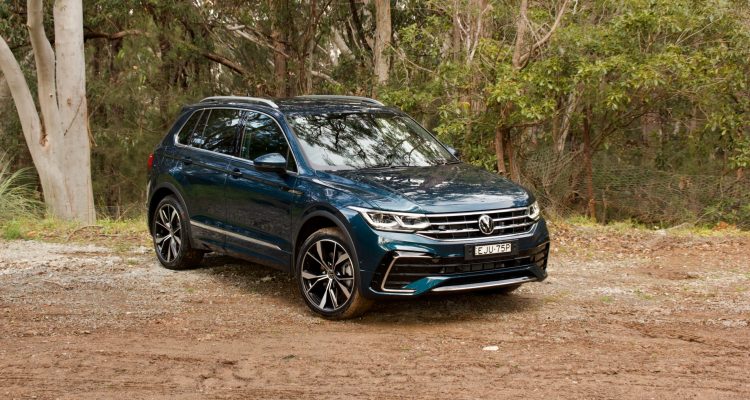
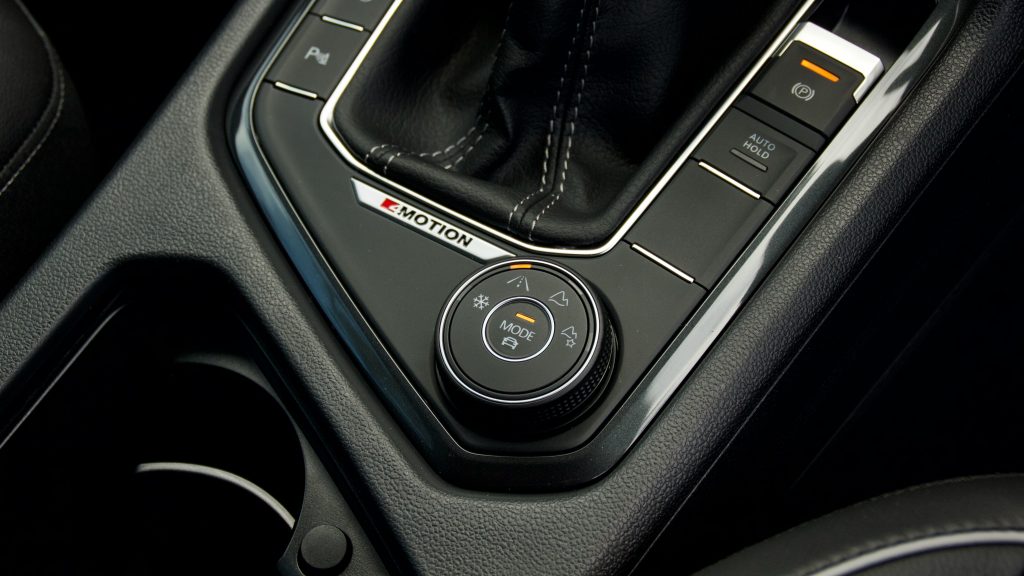
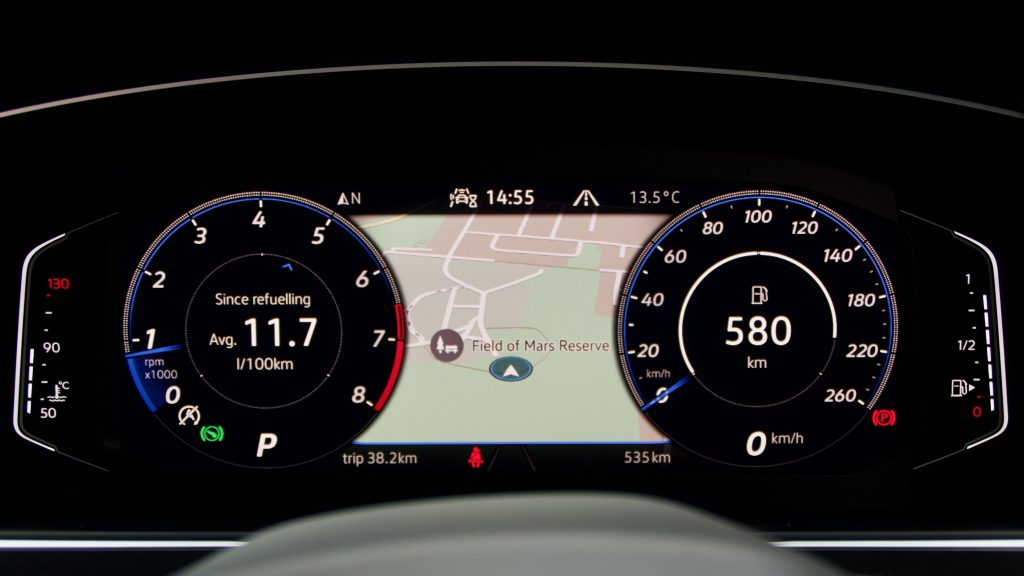
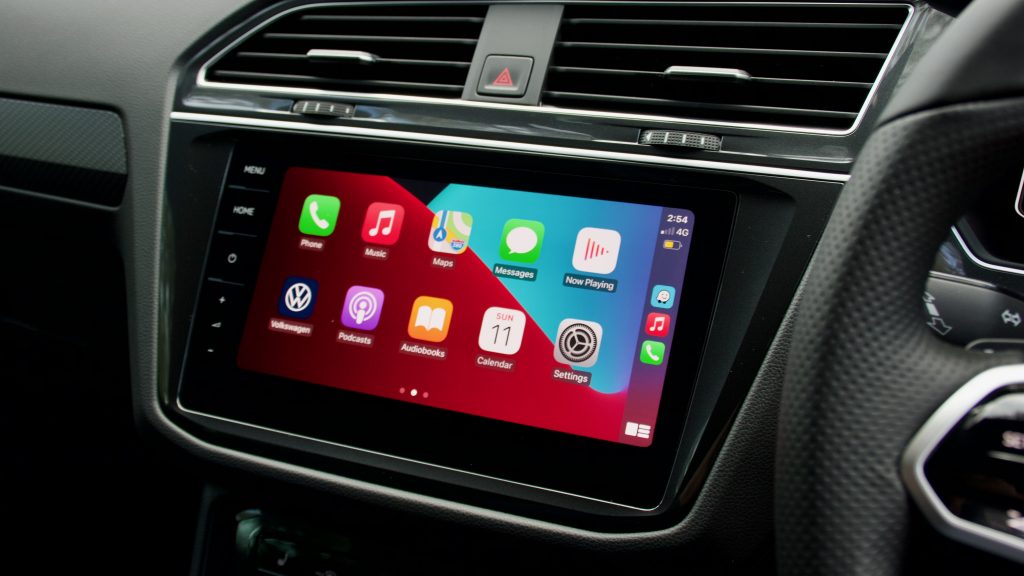
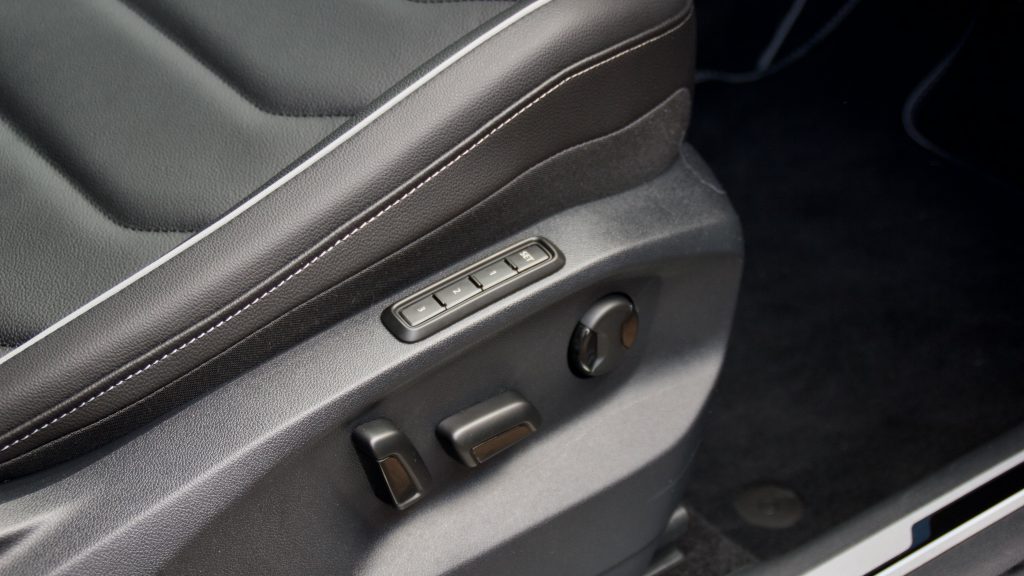
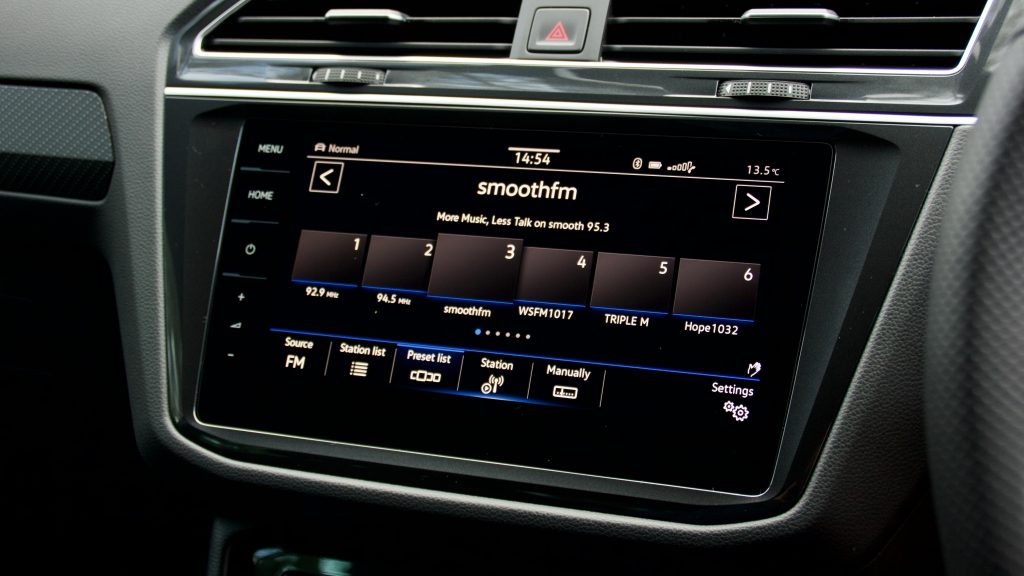
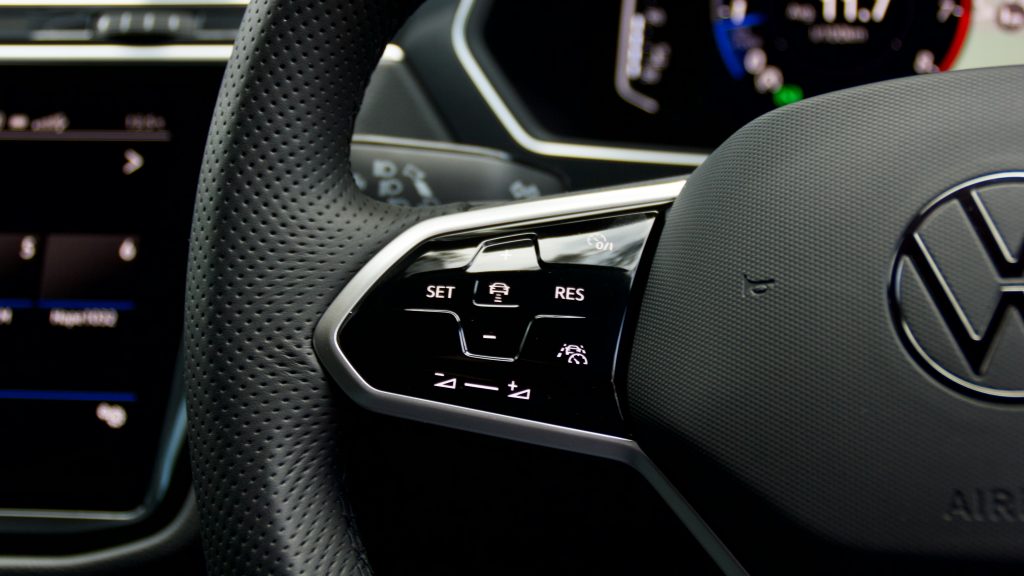
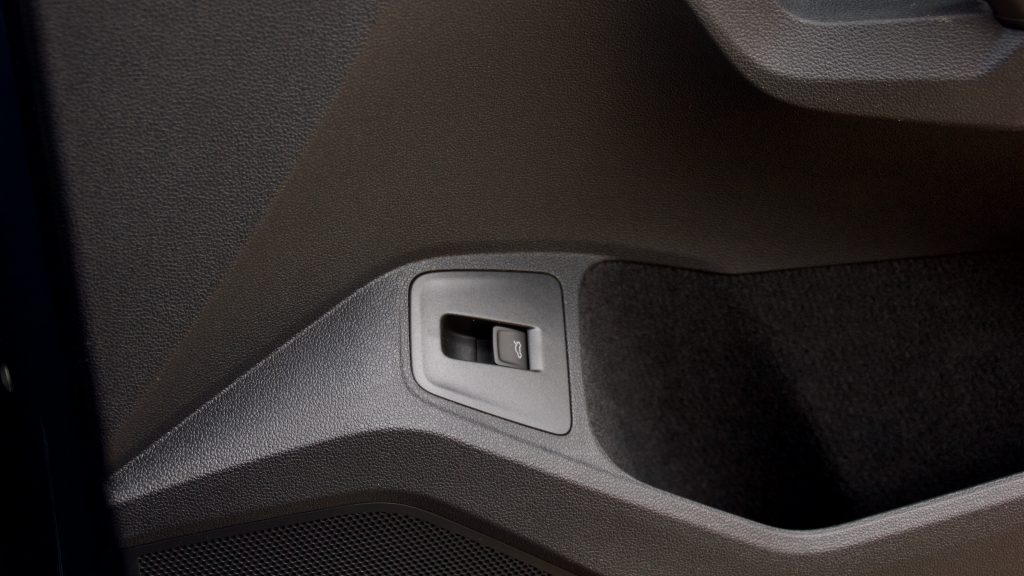
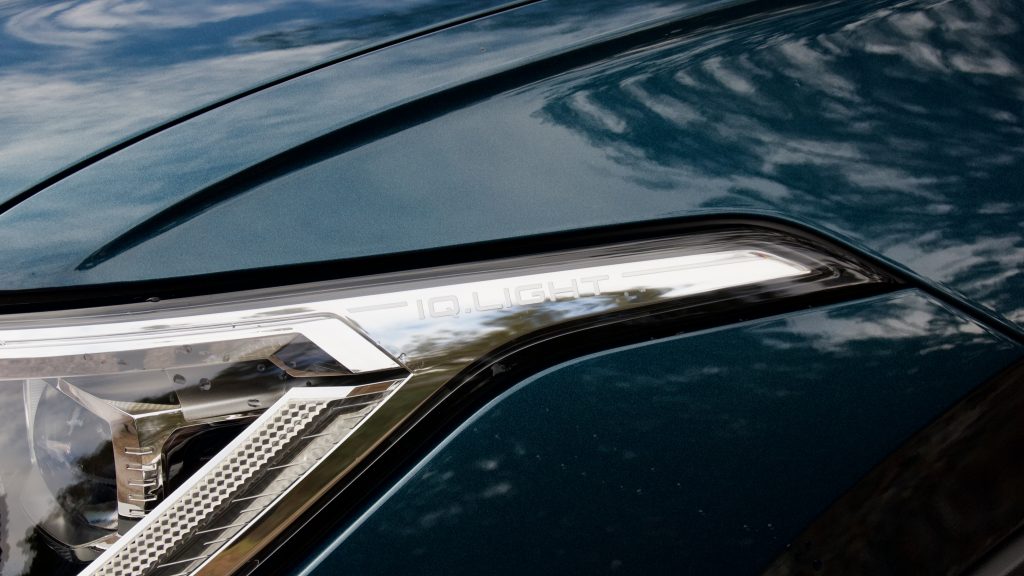
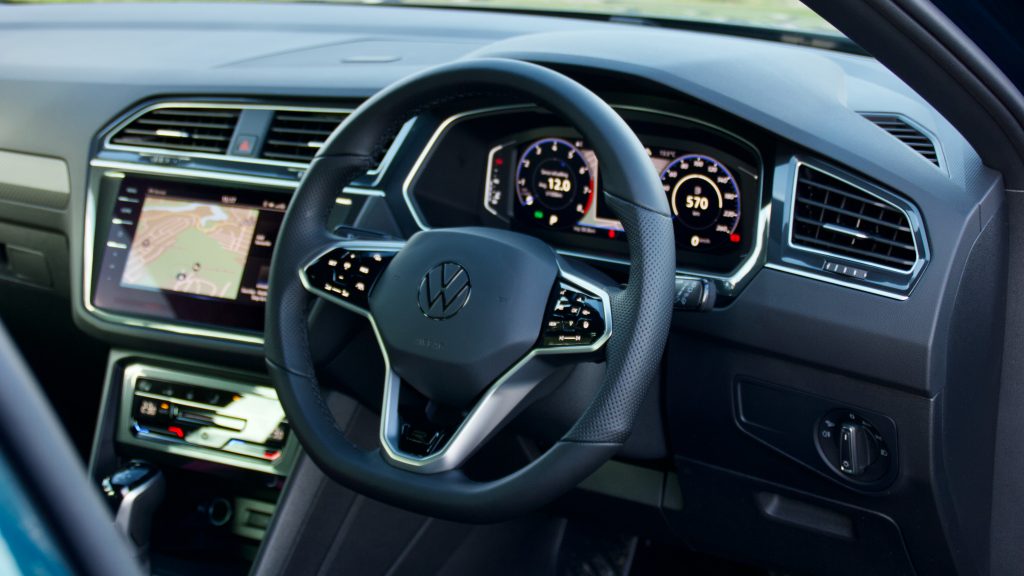
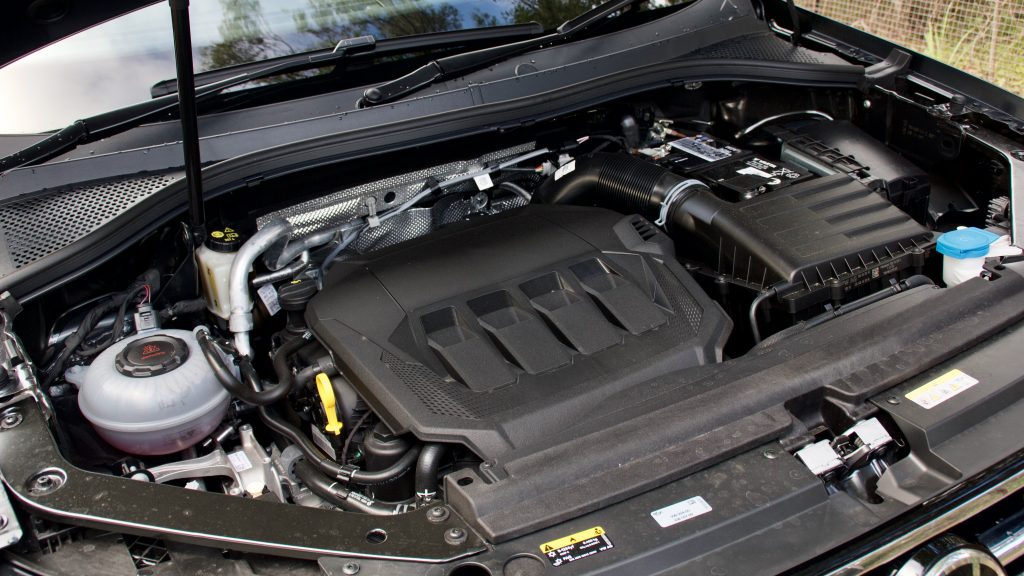
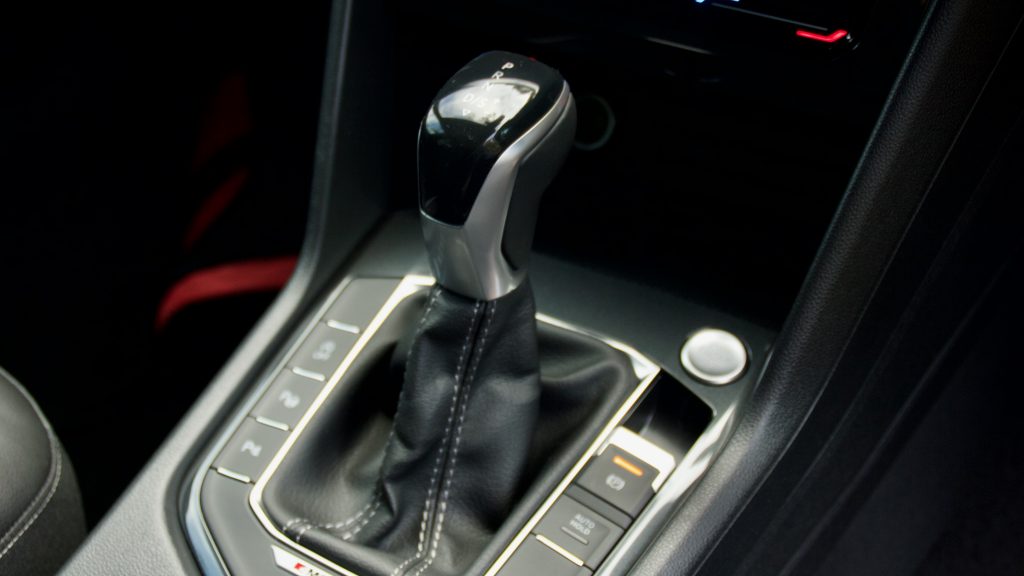
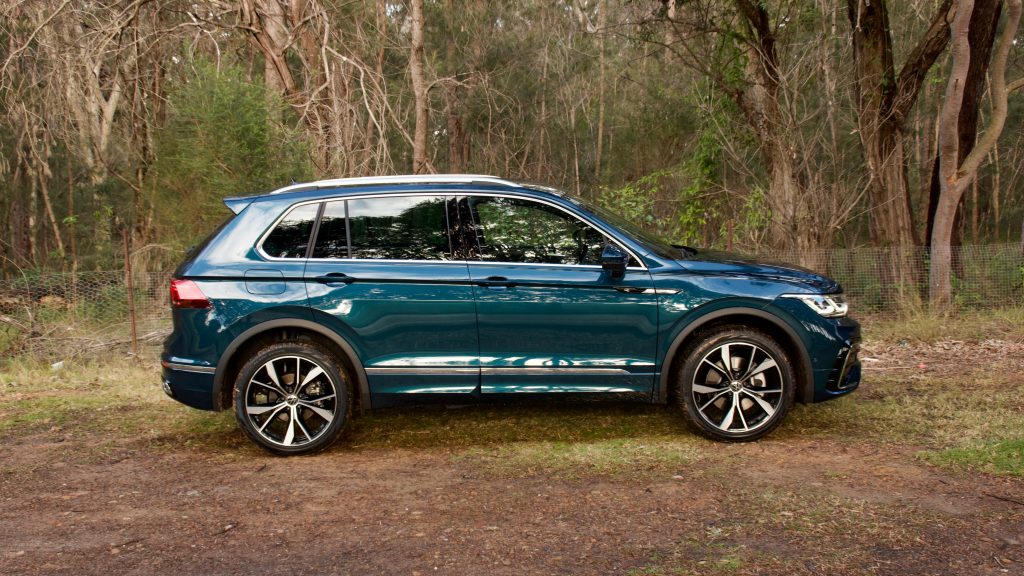
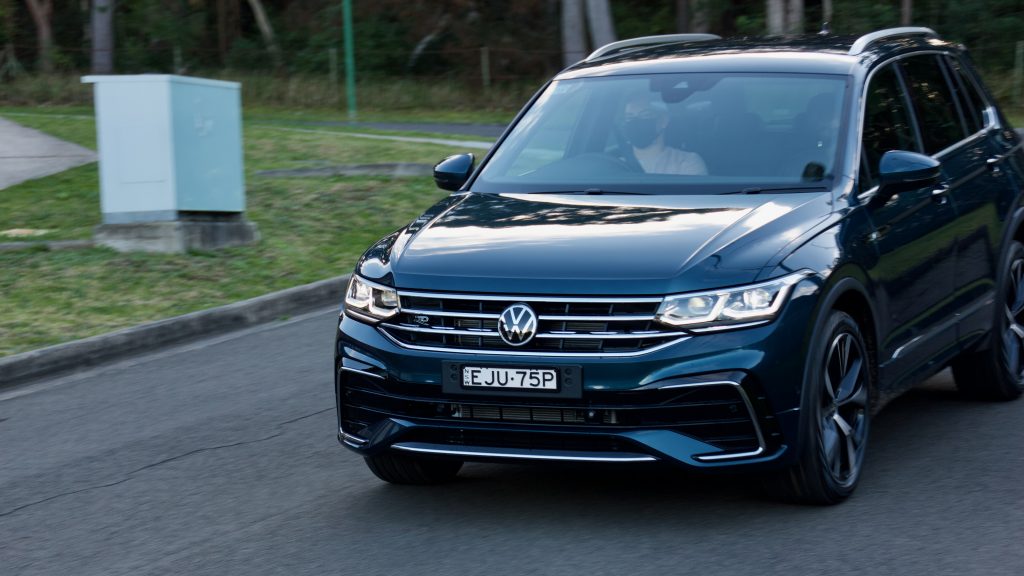
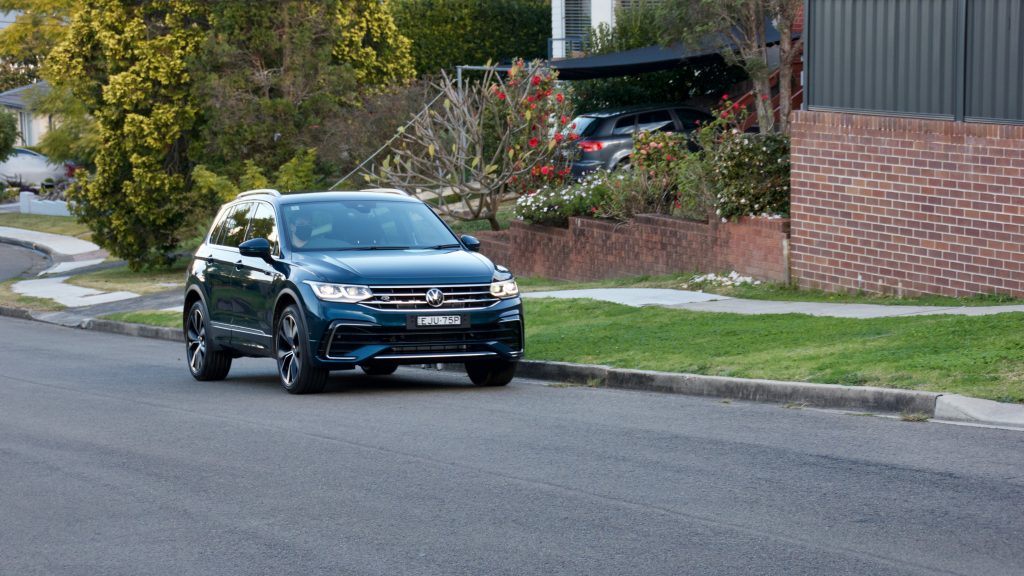
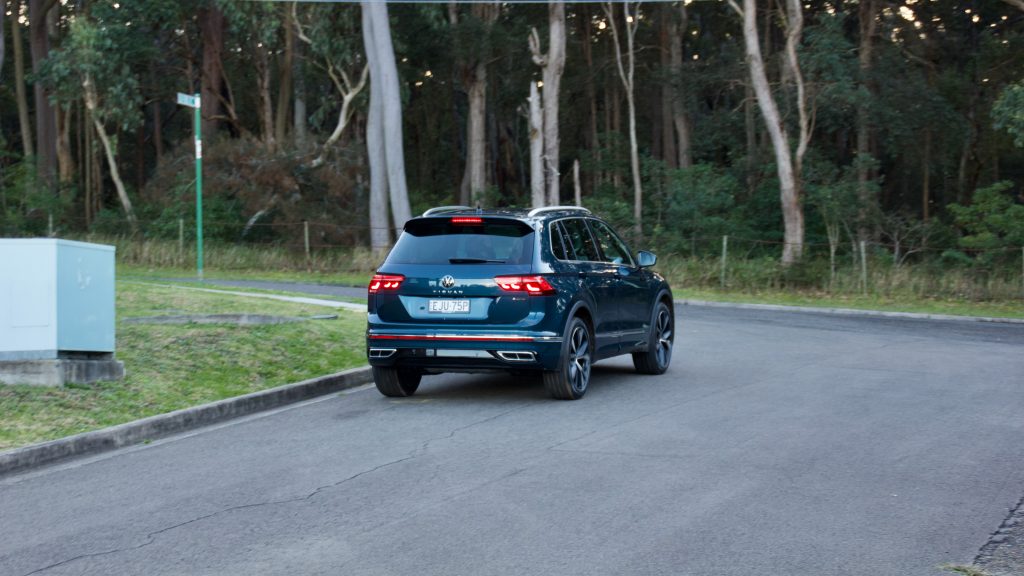
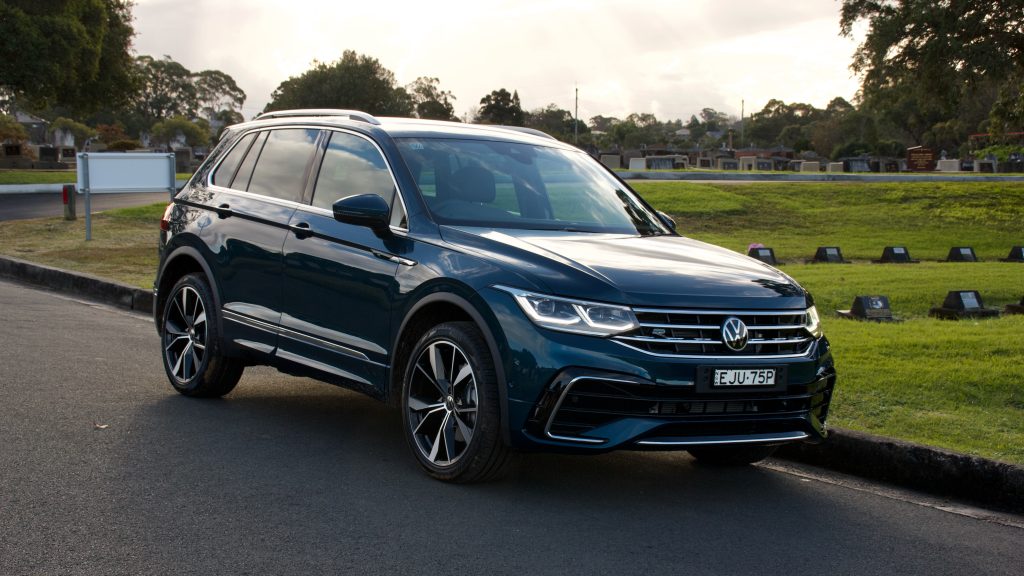
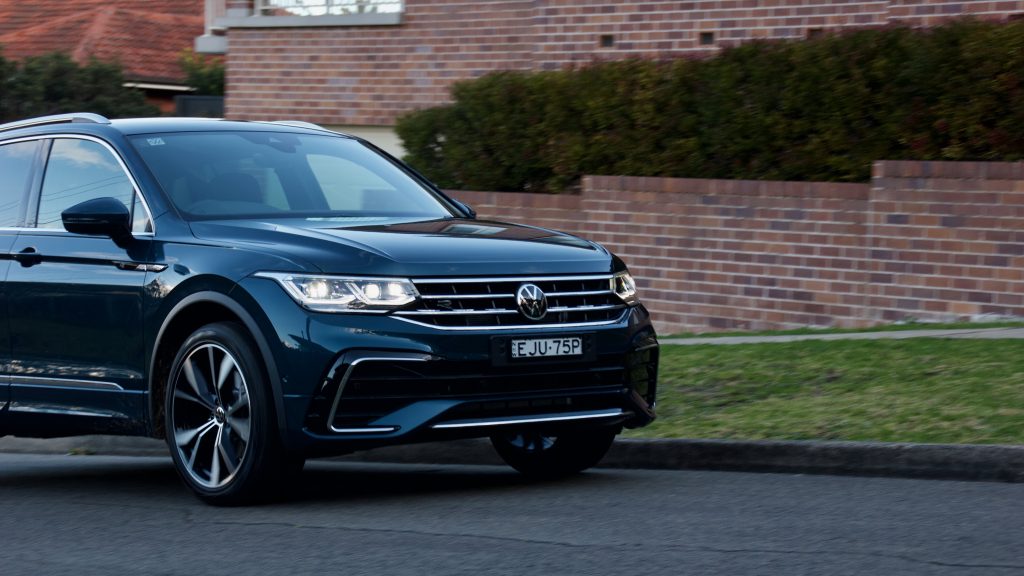
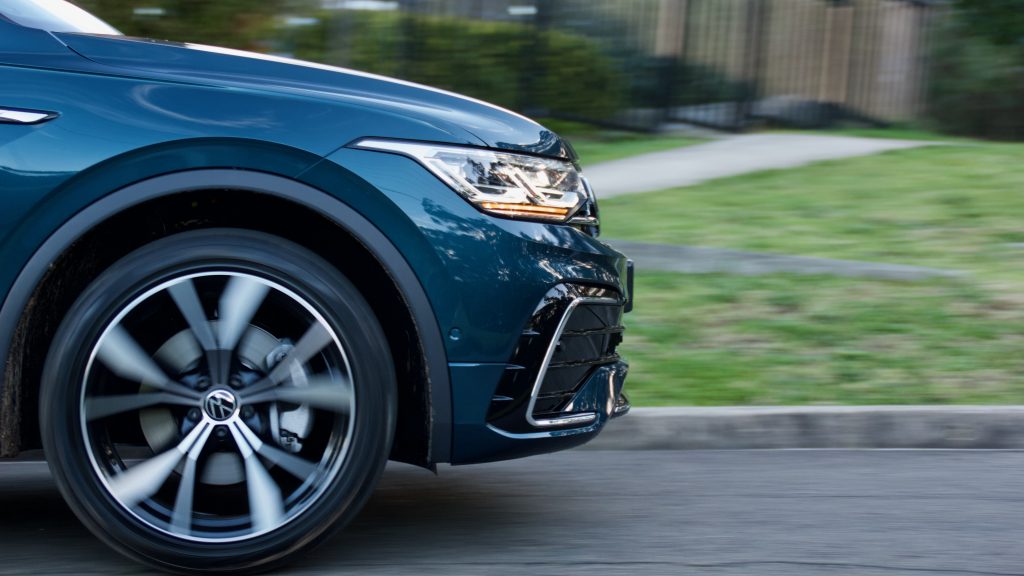
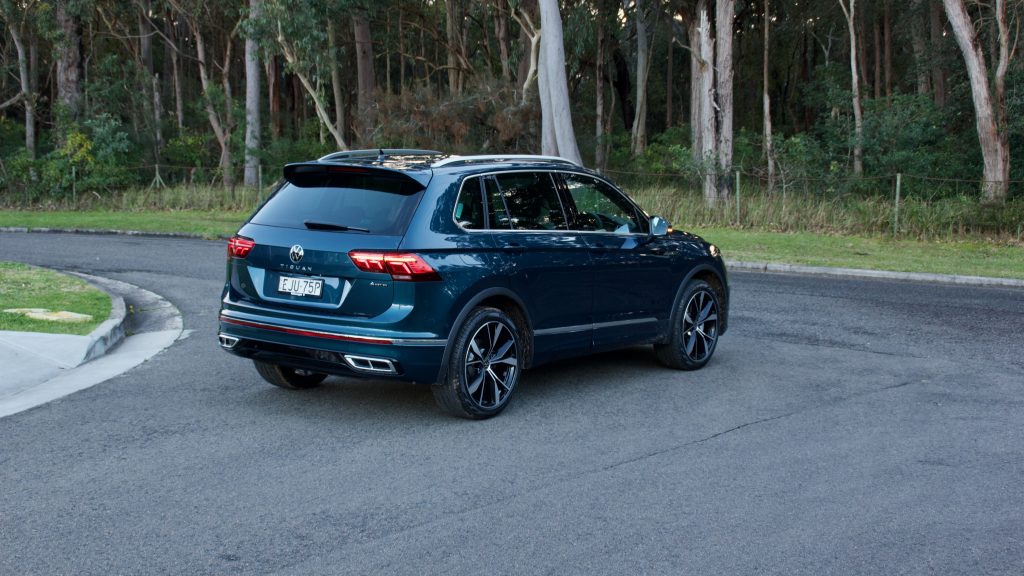
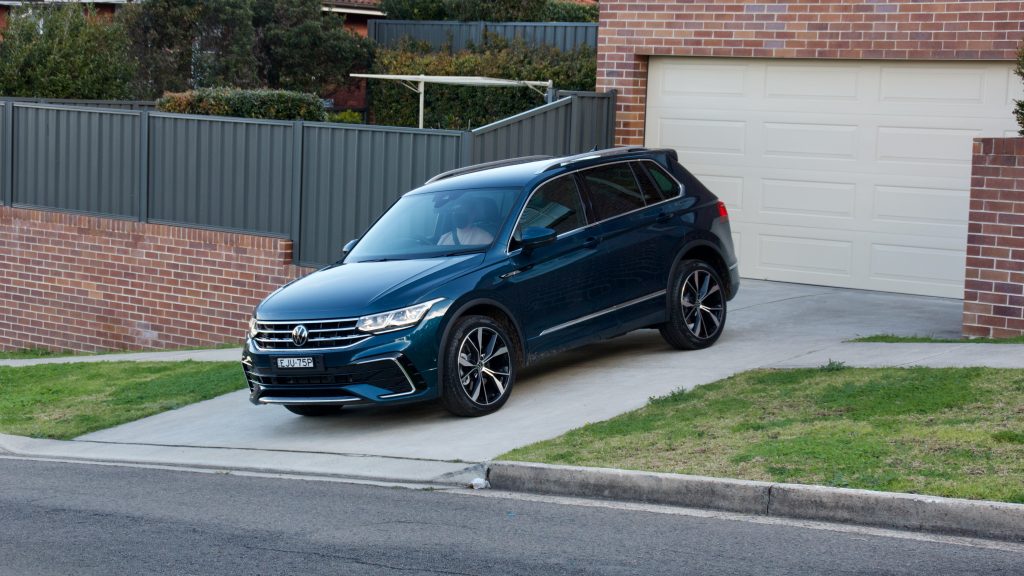
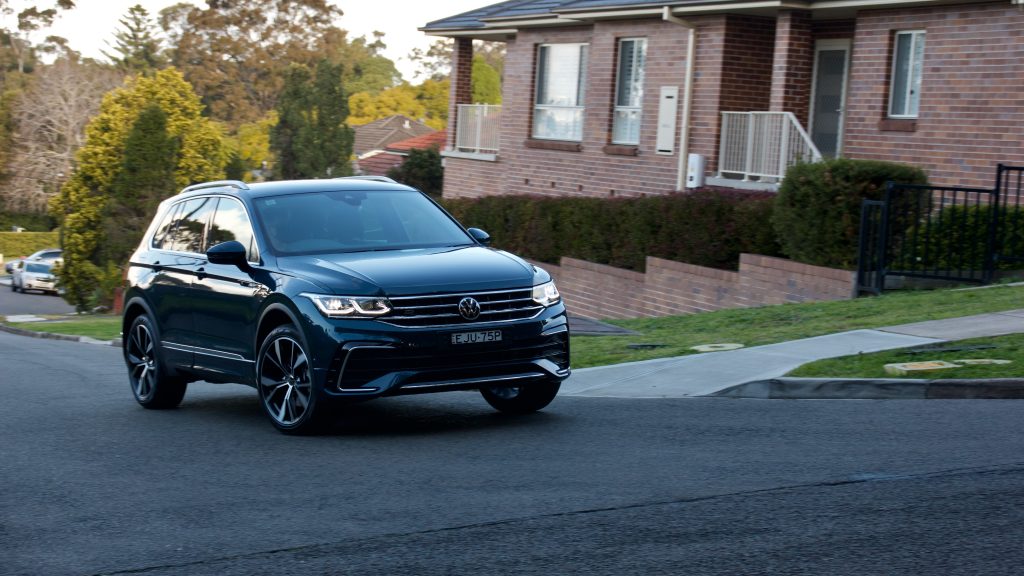
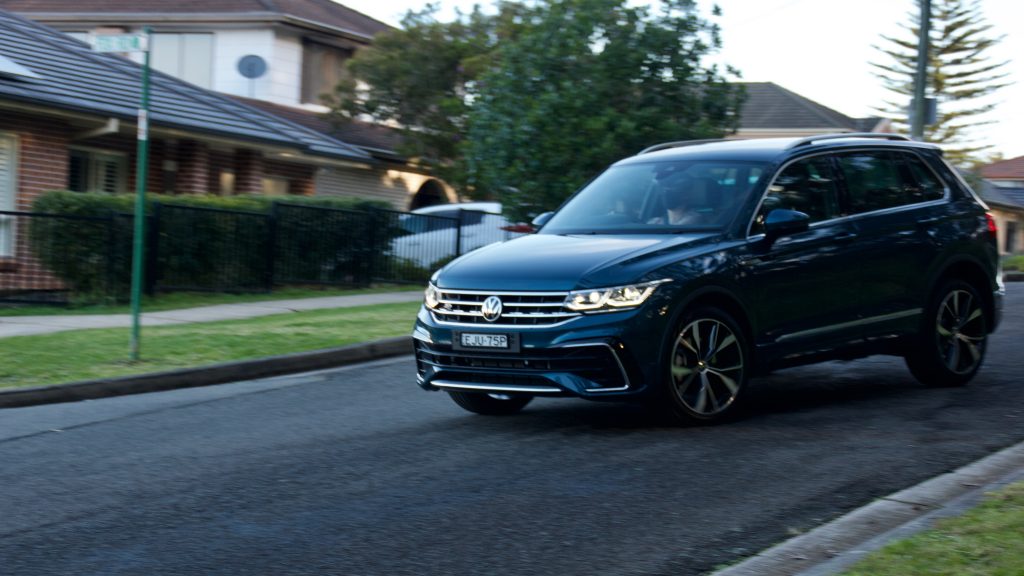
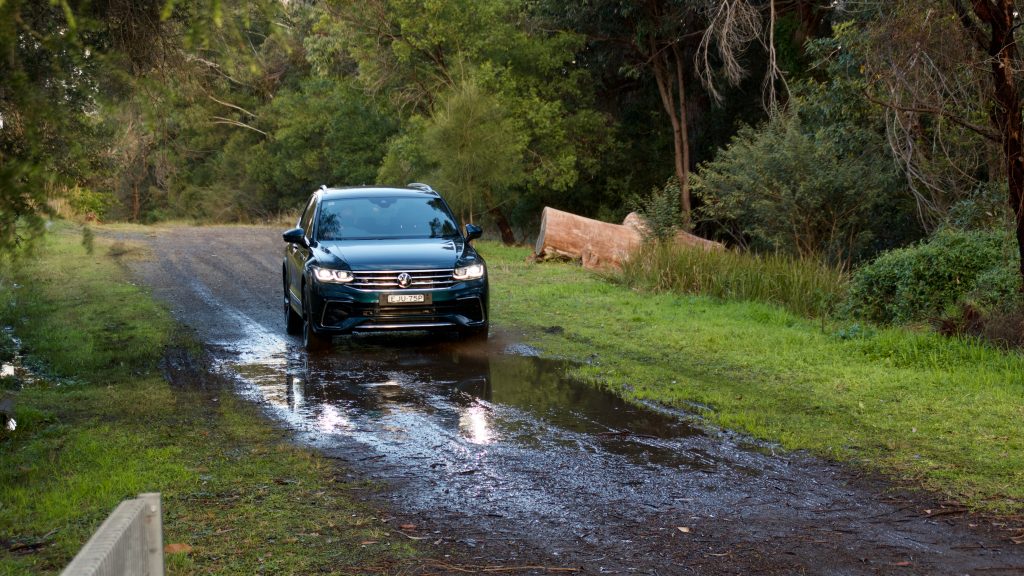
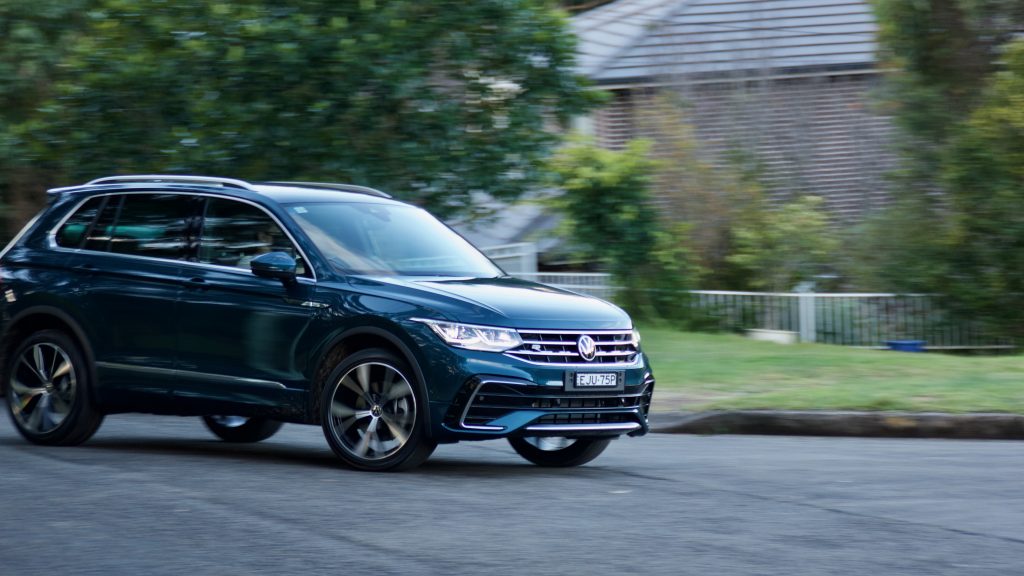
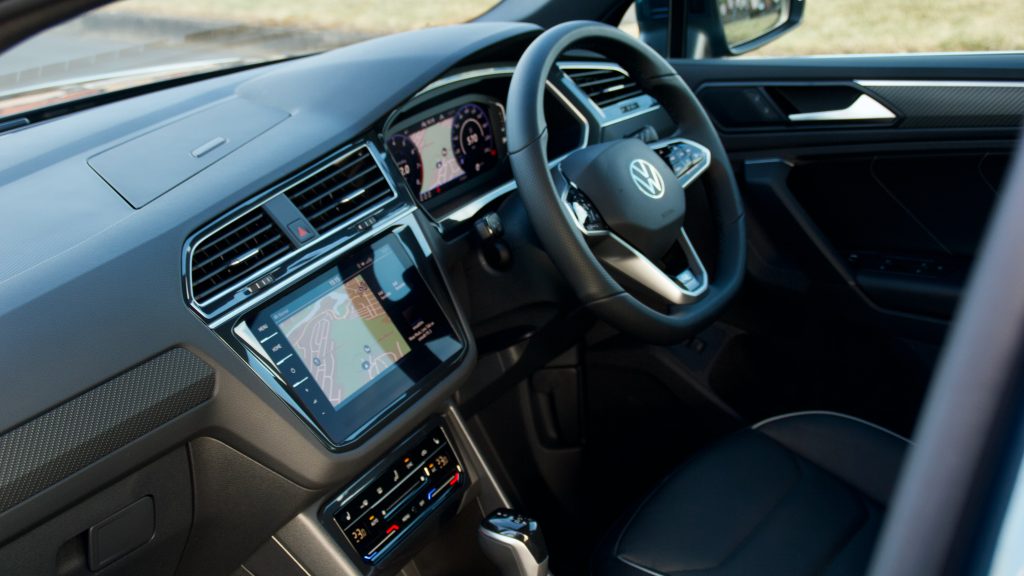
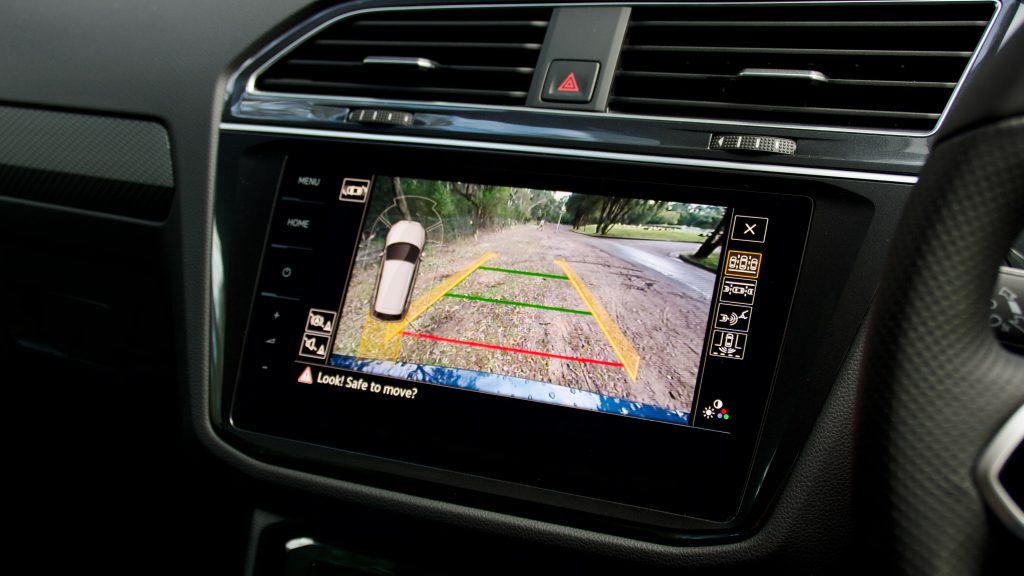
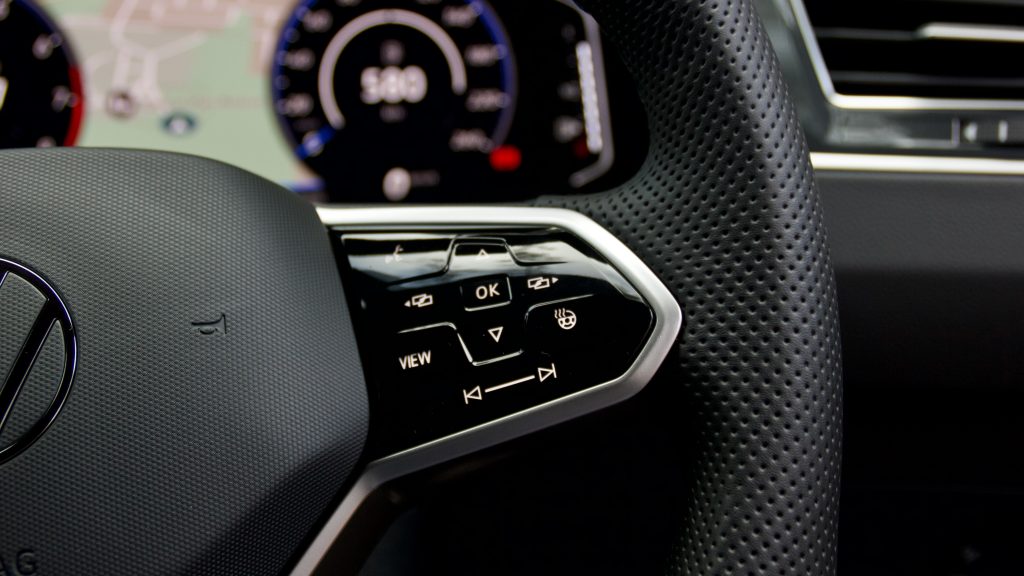
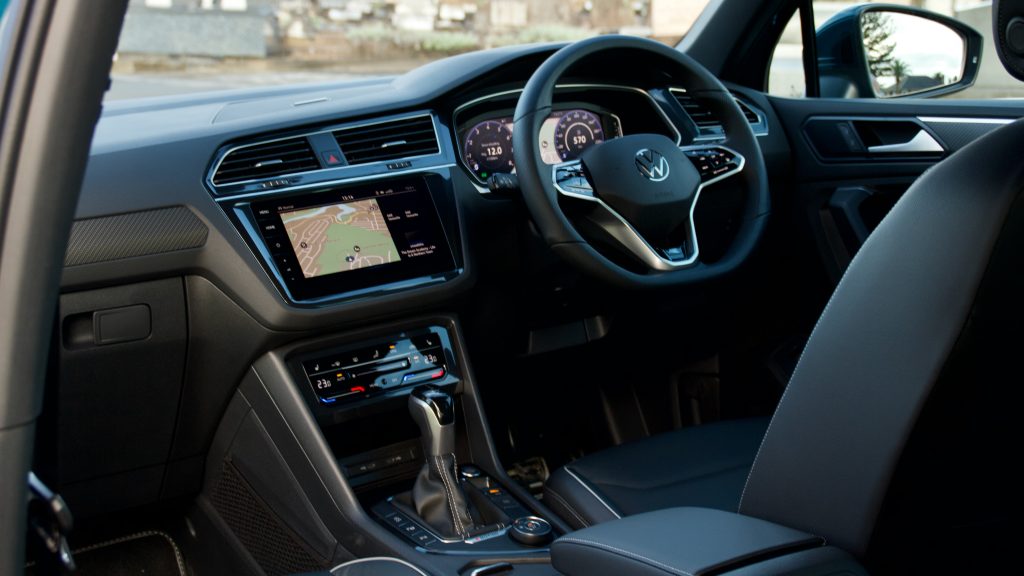
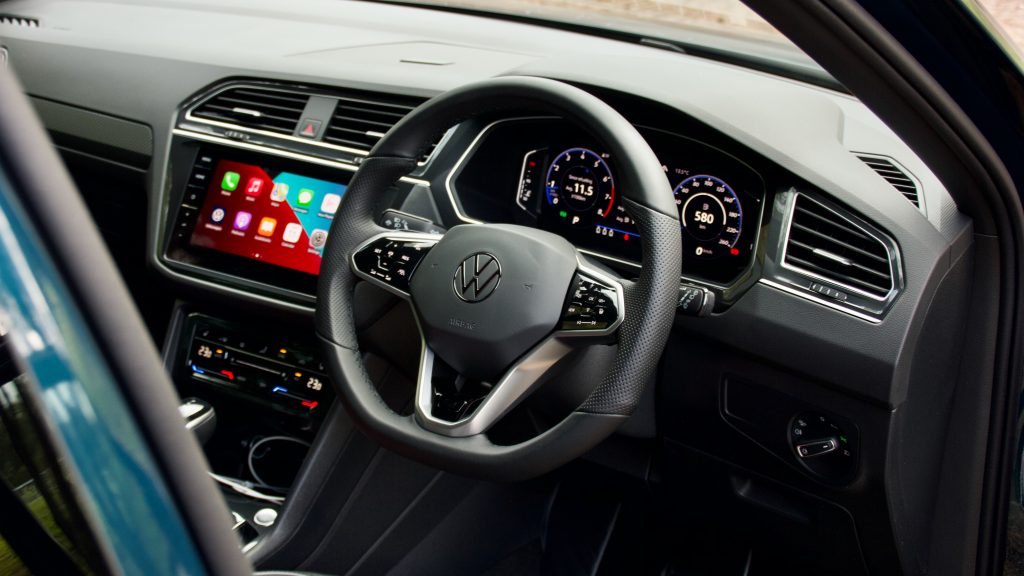
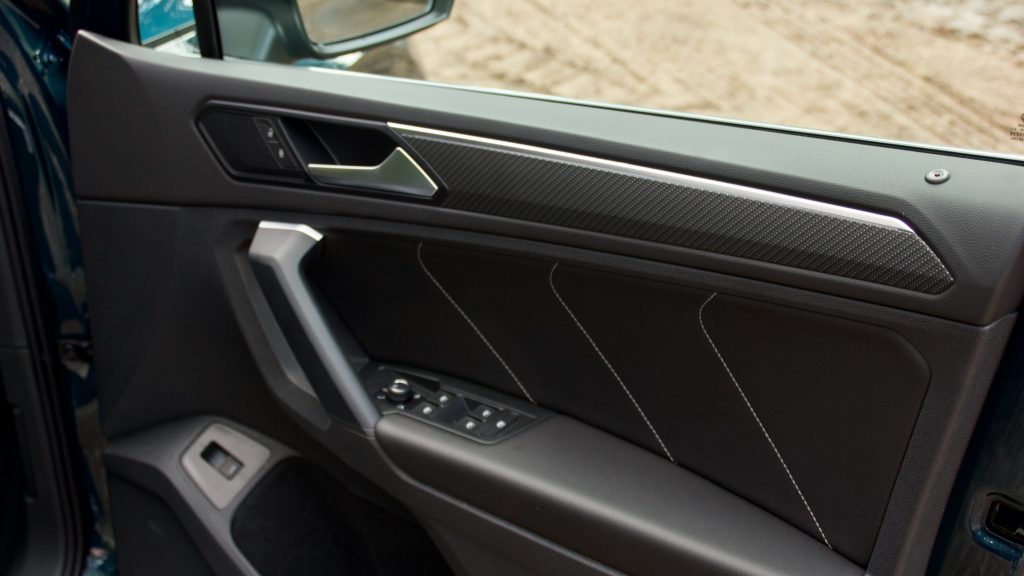
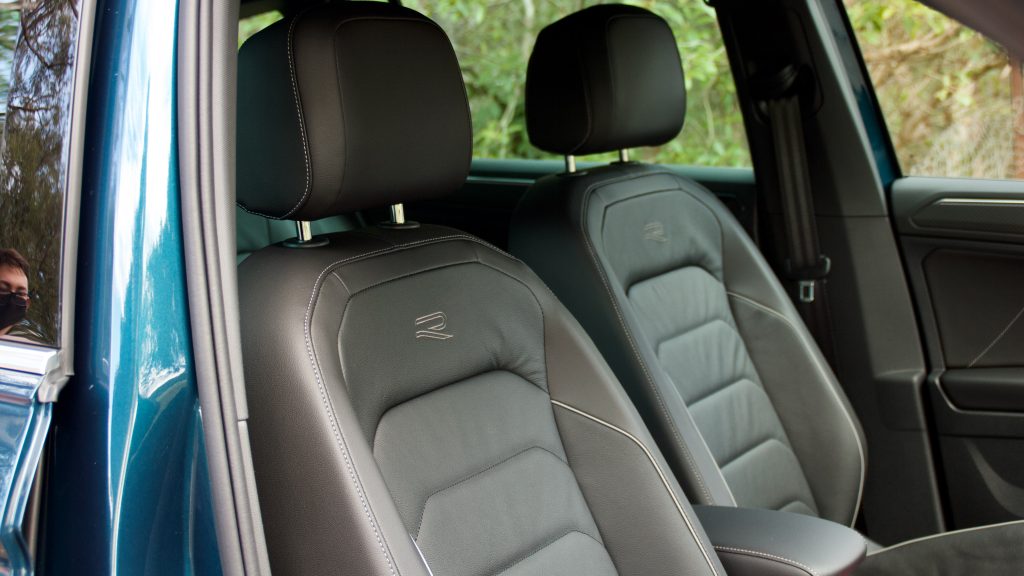
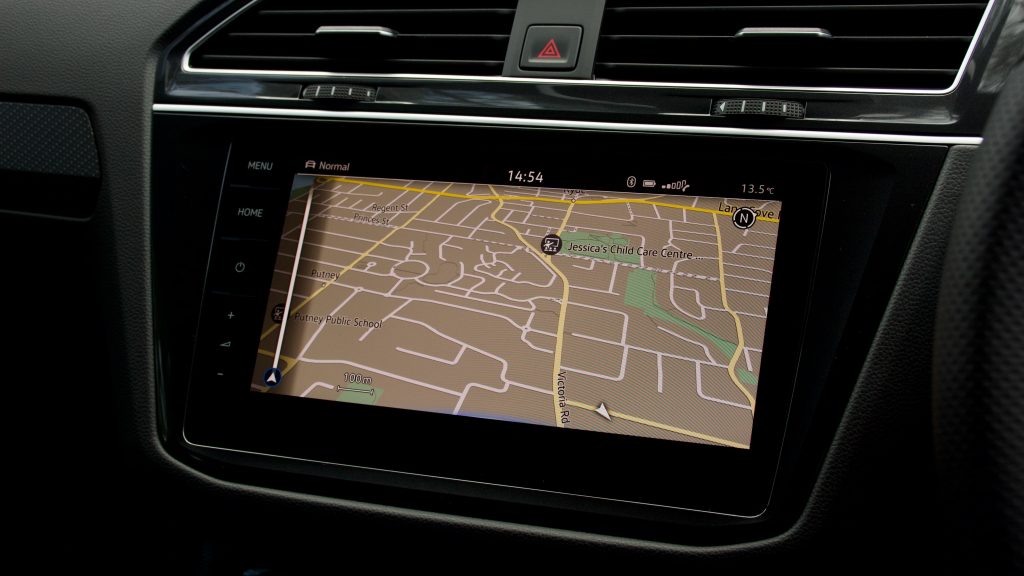
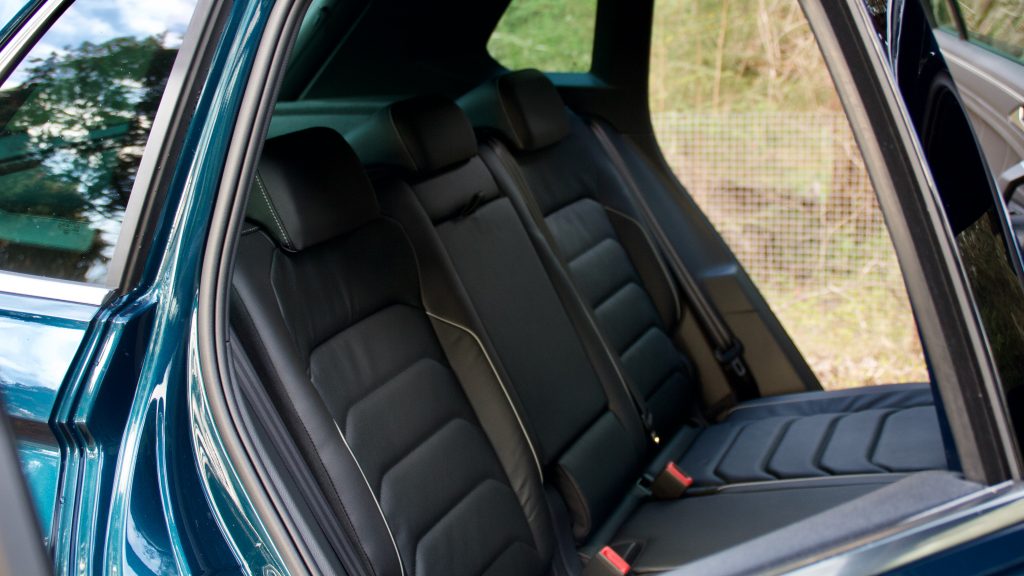
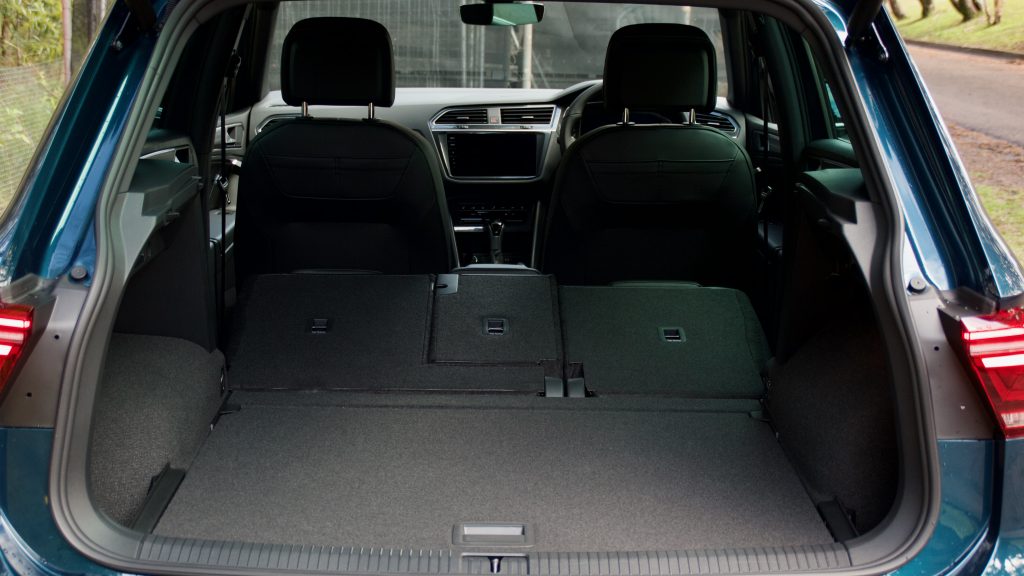
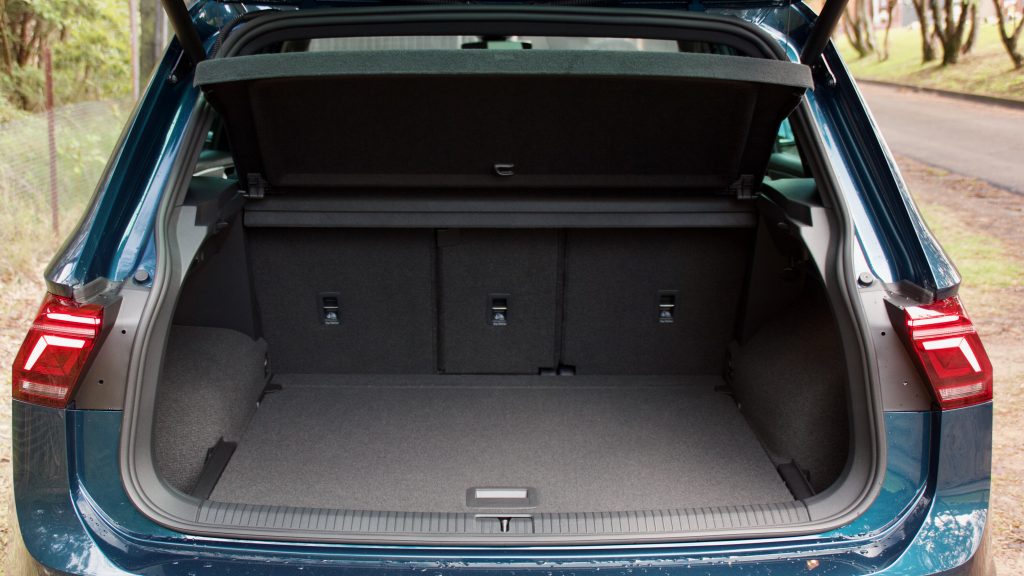
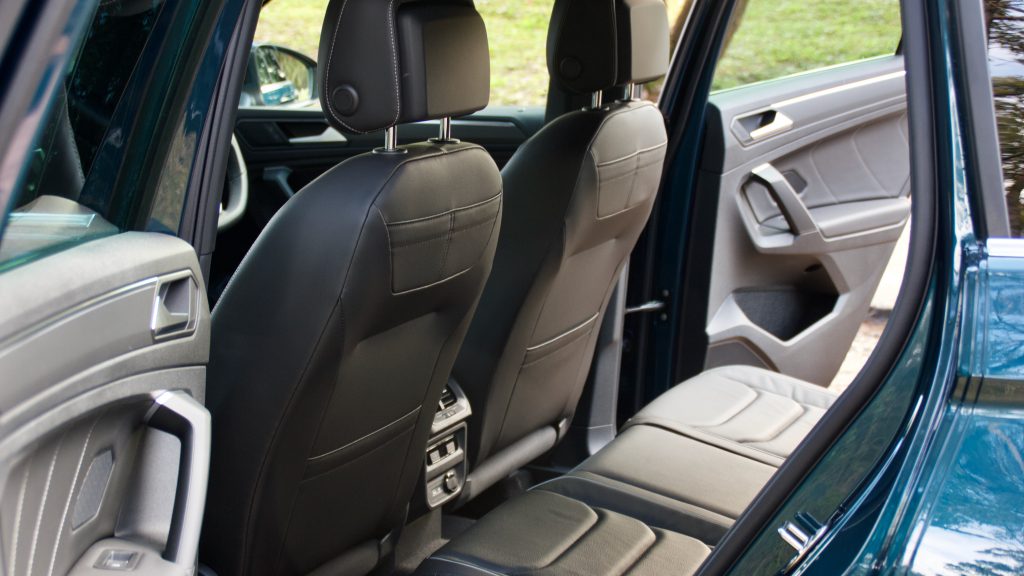
Leave a Reply